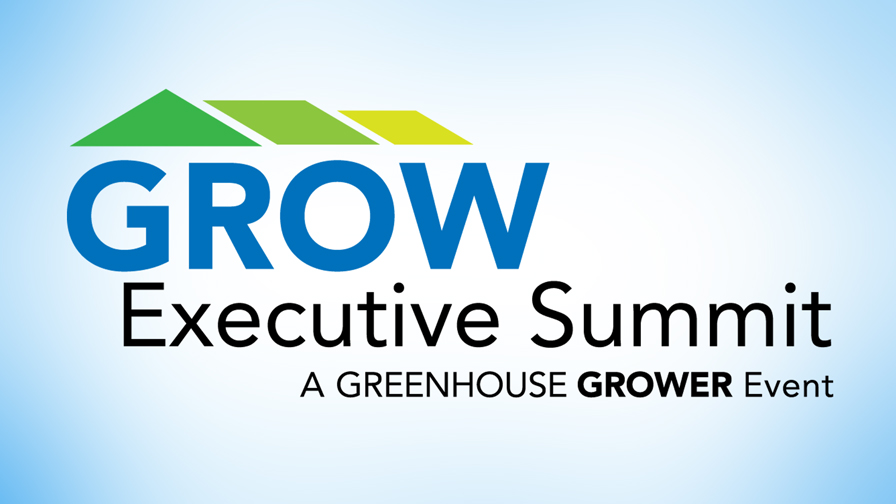20 Quick Takeaways From Greenhouse Grower’s 2022 GROW Executive Summit
 Greenhouse Grower’s second-annual GROW Executive Summit, which took place Nov. 30-Dec. 2 outside of Phoenix, AZ, focused on three pillars driving the current and future state of the controlled-environment horticulture market: labor and talent, pricing and profitability, and supply chain management. Throughout the event, presenters from within the industry and beyond took a deep dive into whether the H-2A program might be a good fit for your business, how you can take full advantage of your workforce, how companies outside of horticulture are handling supply chain logistics, and much more.
Greenhouse Grower’s second-annual GROW Executive Summit, which took place Nov. 30-Dec. 2 outside of Phoenix, AZ, focused on three pillars driving the current and future state of the controlled-environment horticulture market: labor and talent, pricing and profitability, and supply chain management. Throughout the event, presenters from within the industry and beyond took a deep dive into whether the H-2A program might be a good fit for your business, how you can take full advantage of your workforce, how companies outside of horticulture are handling supply chain logistics, and much more.

Watch GreenhouseGrower.com for more information on the Summit, but in the meantime, here are just a few of the immediate takeaways.
Texas A&M University’s Charlie Hall on the green industry economic forecast: “In the past, this industry has done a terrible job keeping new gardeners coming back. The jury is still out for 2023, but we seem to be doing a better job this time.”
Hall: “My revised forecast is for input prices to be up 8% in 2022 and 3.5% in 2023. But check back again with me in February.”
Hall: “Is a recession coming? Leading economic indicators say it may be coming soon. My prediction: There’s a 50% chance in the first six months of 2023, and a 90% chance at some point in 2023.”
Robert Erwin, Director of Cultivation at cannabis operation Copperstate Farms: “The inflationary pressures that have hit much of horticulture have not really affected cannabis.”
Michelle Klieger of Stratagerm Consulting on the greenhouse vegetable market: “The environment is probably the biggest factor driving greenhouse vegetables today. Drought and weather conditions are driving up prices for crops grown outdoors. This represents an opportunity for the greenhouse industry. Much of greenhouse vegetable production is also regional, and this gives you a greater chance to get to know your customers.”
Melinda Knuth, Assistant Professor Horticultural Science at North Carolina State University, on consumers: “It’s very hard to change behavior and perceptions for your consumers, but what you can do is promote the health and environmental benefits of plants.”
Jorge Zamora, Associate General Counsel at Costa Farms, on labor market regulations: “Next year’s adverse effect wage rate (AEWR) is expected to increase an average of 7%, and likely much higher in some states.”
Zamora: “The current H-2A program offers little flexibility in hour changes, etc., based on evolving grower needs. But potential changes in the Farm Workforce Modernization Act could make it easier for year-round producers to participate in the H-2A program.”
Troy Shumaker, Operations Manager at Manzana and former Chief Operating Officer at Walters Gardens on the H-2A program: “H-2A can be a challenge, but it can also be a game changer. As we talked to people who used H-2A, they told us their workers didn’t just do the job, they helped them grow their businesses. But they did say housing was a critical factor to focus on.”
Abe Van Wingerden, Co-CEO and Co-Founder of Metrolina Greenhouses: “You should change your business model at least every ten years. Why? The industry changes significantly over ten-year periods.”
Van Wingerden: “If you’re using H-2A the right way, you may need to change your HR system so it’s less focused on recruiting and more on training.”
Todd Downing, Managing Partner and Co-Founder of BEST Human Capital & Advisory Group: “98% of horticulture businesses say succession and exit planning is important. Yet 86% have no plan in place to address it.”
Larry Turow, Managing Director of Pivotpoint Business Solutions, on adding value to your business: “70% of businesses that go on the market do not sell. However, 30% do. This is why we always need to focus on building value in our business.”
Chris Cimaglio, Managing Partner and Co-Founder of BEST Human Capital & Advisory Group: “If more than 25% of your sales are with one customer, that could be a value killer to your business.”
Cimaglio: “Your company’s prospective buyers are going to do their homework on your company, so you better do your own homework.”
Brian Cook, President of greenhouse lettuce grower Local Bounti, on hiring: “Clarity and transparency are important when hiring. People want to know what they will be doing and what the company stands for.”
Geneiva McNeale, Training and Development Manager of Metrolina Greenhouses, on your talent: “People don’t always work for the company owner. They work for their immediate boss, and if that mid-level manager doesn’t buy in to the company culture, the employee won’t either.”
R.J. Romano, Managing Director & Supply Chain Advisory Practice Leader at BDO Consulting, on supply chain optimization: “Supply chain disruptions have been here and will always be here, but the lessons we’ve learned are helping us prepare better than ever before.”
Ryan Douglas, Founder of Ryan Douglas Cultivation: “Why should we look beyond horticulture for supply chain solutions? Because often the answers lie outside of our bubble.”
Dave Malenfant, CEO of MDM Consulting: “There needs to be a new mindset in how we implement e-commerce. It involves different distribution systems than we’re currently using.”










